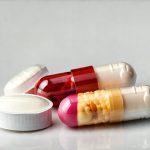Antibiotics are powerful tools in fighting bacterial infections, but their use often comes with unintended consequences, particularly on our gut microbiome and, subsequently, bladder health. While effectively eradicating the harmful bacteria causing an infection like a urinary tract infection (UTI), antibiotics don’t discriminate – they also eliminate beneficial bacteria crucial for maintaining a balanced ecosystem within the body. This disruption can leave you vulnerable to various post-antibiotic side effects, including lingering bladder irritation and increased susceptibility to future infections. Understanding how to proactively support your bladder after completing a course of antibiotics is vital for restoring optimal function and minimizing discomfort.
The delicate balance of bacteria in our gut directly influences overall health, impacting everything from digestion and immunity to even mental wellbeing. A compromised microbiome can weaken the body’s natural defenses, making it easier for opportunistic pathogens to take hold, potentially leading to recurring bladder issues or other infections. It’s not just about restoring ‘good’ bacteria; it’s about fostering a diverse and resilient microbial community that works synergistically with your body. This means looking beyond simply taking probiotics and embracing lifestyle choices that support long-term bladder health and microbiome recovery.
Restoring Gut Health & Its Connection to Bladder Function
The gut-bladder connection is more significant than many realize. A healthy gut microbiome plays a key role in immune regulation, and a strong immune system is essential for preventing UTIs and managing inflammation. When antibiotics disrupt the gut flora, it can lead to dysbiosis – an imbalance of microorganisms. This imbalance weakens the immune response, potentially making you more prone to infections, including those affecting the urinary tract. Furthermore, some research suggests that imbalances in gut bacteria can influence bladder function directly through neural pathways and inflammatory processes.
Rebuilding a healthy gut microbiome isn’t a quick fix; it requires a multi-faceted approach. – Probiotics are often recommended after antibiotics, but selecting the right strain is crucial. Look for strains specifically researched for urinary tract health, such as certain Lactobacillus species (like L. rhamnosus GR-1 and L. reuteri RC-14). – Dietary changes play a huge role. Incorporating prebiotic-rich foods – those that feed the beneficial bacteria in your gut – is essential. These include garlic, onions, leeks, asparagus, bananas, oats, and apples. Fermented foods like yogurt (with live cultures), kefir, sauerkraut, kimchi, and kombucha can also contribute to a healthier microbiome.
Beyond probiotics and prebiotics, consider incorporating postbiotic support. Postbiotics are the beneficial compounds produced by gut bacteria during fermentation, such as short-chain fatty acids. These compounds have anti-inflammatory properties and can further bolster gut health. Finally, minimizing stress levels is crucial because chronic stress negatively impacts both gut health and immune function. Practices like mindfulness, yoga, and meditation can help manage stress and support overall wellbeing. If you’re experiencing persistent symptoms even with a healthy lifestyle, consider exploring supplements for bladder support.
Dietary Strategies for Bladder Support
Diet significantly influences bladder health, particularly after antibiotic use. Certain foods can irritate the bladder, exacerbating symptoms like urgency, frequency, and discomfort. Identifying and minimizing these triggers is vital. – Avoid highly acidic foods (citrus fruits and juices, tomatoes), caffeine, alcohol, artificial sweeteners, spicy foods, and carbonated beverages. These are known bladder irritants for many people. – Focus on incorporating anti-inflammatory foods into your diet. Foods rich in omega-3 fatty acids (salmon, flaxseeds, chia seeds) can help reduce inflammation throughout the body, including the urinary tract. Berries, particularly blueberries, contain antioxidants that support overall health and may protect against infection.
Hydration is paramount. Drinking sufficient water helps dilute urine, reducing irritation to the bladder lining and flushing out bacteria. Aim for at least 6-8 glasses of water daily, but adjust based on your activity level and climate. However, avoid drinking large amounts of fluid right before bedtime to minimize nighttime trips to the bathroom. Consider herbal teas known for their calming properties like chamomile or ginger, but be mindful of potential interactions with any medications you’re taking. For those feeling fatigued, it’s important to remember low-energy days don’t have to mean neglecting bladder health.
Rebuilding Your Bladder’s Resilience
Antibiotics can sometimes leave the bladder feeling sensitive and irritated, even after the infection is cleared. This sensitivity may manifest as increased urgency, frequency, or a burning sensation during urination. Bladder training exercises can help rebuild your bladder’s capacity and reduce these symptoms. This involves gradually increasing the intervals between bathroom trips, even if you feel the urge to go sooner. Start by adding 15-20 minutes to your usual interval each time you successfully resist the urge.
Pelvic floor muscle exercises (Kegels) are another valuable tool for bladder support. Strong pelvic floor muscles provide structural support to the bladder and urethra, helping prevent leakage and improving control. To perform Kegels correctly, squeeze the muscles you would use to stop urination midstream, hold for a few seconds, and then release. Repeat this several times a day. However, avoid doing Kegels while urinating, as this can actually weaken the pelvic floor muscles over time. If physical activity has contributed to bladder issues, remember physical overload requires specific support strategies.
The Role of Lifestyle Adjustments
Beyond diet and exercise, certain lifestyle adjustments can significantly support bladder health post-antibiotics. – Practice good hygiene habits, including wiping from front to back after using the toilet, to prevent bacteria from entering the urinary tract. – Wear breathable cotton underwear and avoid tight-fitting clothing, which can trap moisture and create a breeding ground for bacteria. – Urinate immediately after intercourse to help flush out any potential bacteria introduced during sexual activity.
Consider your stress levels. Chronic stress weakens the immune system and can exacerbate bladder symptoms. Incorporate stress-reducing activities into your routine, such as yoga, meditation, deep breathing exercises, or spending time in nature. Finally, listen to your body. If you experience persistent discomfort or symptoms of a UTI even after completing antibiotics, consult with your healthcare provider. Don’t self-treat; seeking professional advice is crucial for ensuring appropriate diagnosis and treatment. Remember, supporting your bladder after antibiotics is an ongoing process that requires consistent effort and attention to both internal and external factors influencing its health. If you have recently had a UTI, it’s important to support bladder healing naturally.





















